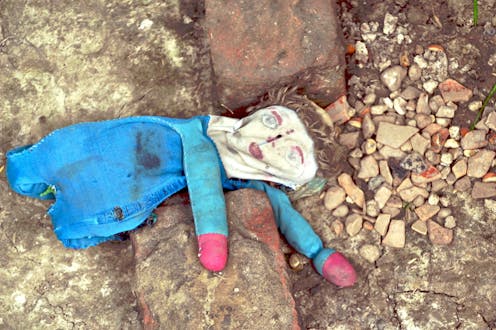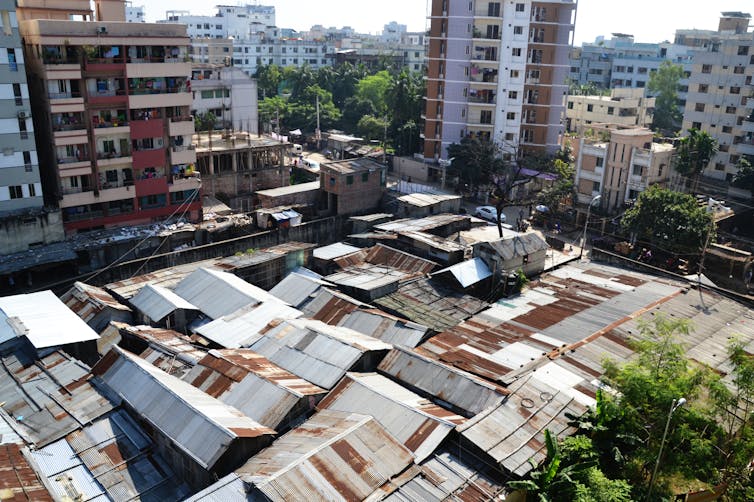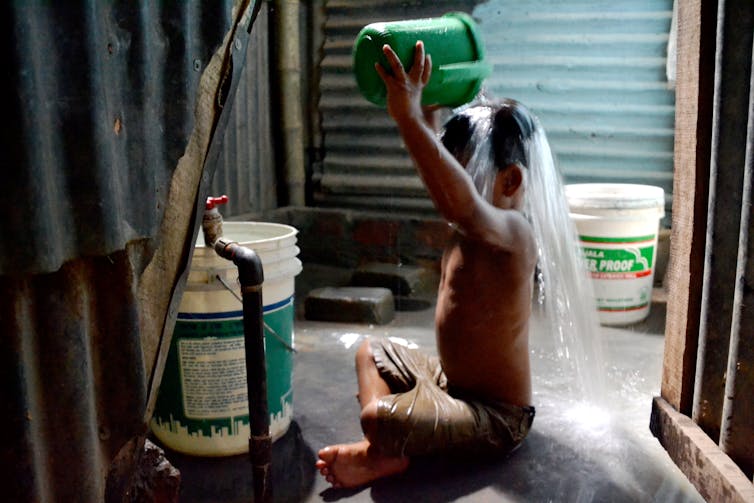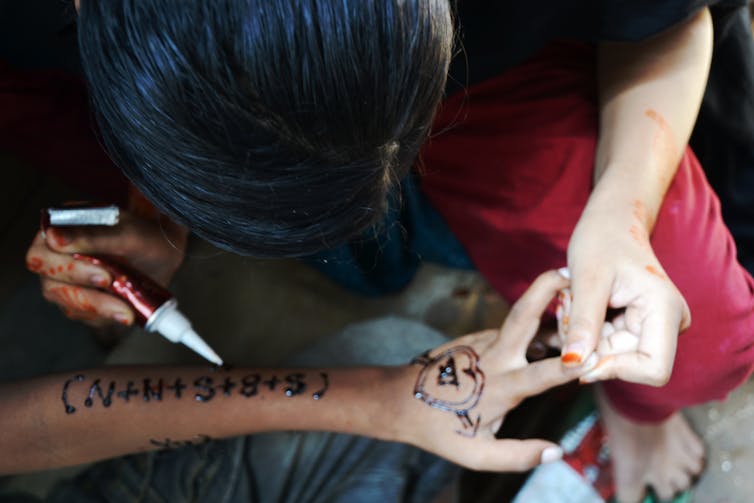
Violence against women and children, including sexual abuse and exploitation, remains a taboo subject in the policy debates attended by international delegates at COP28, the latest round of the UN climate negotiations in Dubai. However, the connections between climate change and gender-based violence, including human trafficking, are real and already blight lives worldwide.
Countries at COP28 have agreed to set up a loss and damage fund which would pay poor nations for the irreparable harm caused by the deteriorating climate. How can we compensate non-economic loss and damage – the impacts of climate change that cannot be easily measured in monetary terms?
To answer this question, we must understand how these impacts already affect people in the world’s most vulnerable regions. By interviewing people in Bangladesh, Fiji and Vanuatu, we found that climate change is a trigger that can worsen, intensify or prolong the perpetration of violence and coercive control.
Entrapment in Bangladesh
Among the girls and young women I spoke to in Bangladesh, child marriage was a common coping mechanism for the lost income and insecure food supplies associated with unpredictable weather.
Storms, punishing heat and unreliable rain made migration from the countryside to cities inevitable. Many migrant women and girls turned to work in the garment industry. In the factories and nearby dwellings, violence and poor mental health are especially common for female migrant workers.

Hunger has pushed numerous households to marry off their daughters and sisters. Belkis, a woman I interviewed, described how her family struggled with poverty and health issues during her childhood after they migrated from the southern coast of Bangladesh to the capital Dhaka, escaping cyclones and land erosion:
I got married when I was 12 years old. A few years later I gave birth to my first son. I faced a lot of problems giving birth to him … A woman from work was a doctor so she took me to Dhaka Medical Hospital. There they did some tests and noticed that my kidneys were failing.
Her sons may also need to leave school and start working. If she has a daughter, she may be forced to marry as a child. Harsh living and working conditions scar the health and wellbeing of entire families – but hit women and children hardest.
Child sexual exploitation and trafficking in Fiji
Unrest swept Fiji in 2021 after a ten-year-old girl on Vanua Levu, one of the islands in the north east, was raped by her uncle in a cyclone shelter. He was sentenced to 14 years imprisonment.
The incident was not an isolated event. Women we spoke to in Nadi, a city on Fiji’s main island, describe rapes in shelters and report children being trafficked for sexual purposes after the floods.
Overcrowded shelters create unsafe conditions. Many of the toilets have windows but no doors, let alone locks. Disaster evaluation reports also indicate that many emergency responders in Fiji lack necessary training to identify signs of abuse (sexual or otherwise) and so are unable to prevent further violence.

Lusi*, a Red Cross health coordinator, said:
Women are more vulnerable to violence in the wake of cyclones. In tents and makeshift shelters, there’s a lack of privacy and proper lighting, which makes it harder to stay safe.
Nasele*, a 22-year old woman that we interviewed in Nadi, explained:
In the dark [women] have to go out and this places [them] in unsafe conditions. In evacuation centres, women and children get exposed to sexual dangers – children’s rights are ignored. In this country, disaster management [offers no] quick recovery for women and children.
Nacanieli*, a Save the Children officer working in Nadi observed trafficking, sexual exploitation and violence:
The woman moved her family to Nadi to live with her new [Australian] husband. One year later, she returned to our office and told the SCF staff [that]…her new husband had moved the family to Australia and upon their arrival they were held captive in his house. She told me about the sexual exploitation of her oldest daughter (she was 14 years old at the time). …The woman was too scared to go to the police and lived in fear while in Australia. She and her children eventually fled the country with the help of a neighbour. The oldest daughter is now involved in prostitution in Nadi … We saw the scars of what looked like needle marks and cigarette burns on the woman and all four of her children.
In recent years, tourist hotspots such as Nadi in Fiji have seen a peak in child sexual abuse, trafficking and exploitation, primarily by perpetrators from Australia, New Zealand, the US and Europe.
Loss and healing in Vanuatu
Women in Vanuatu found recovery and healing in their social networks, which stuck together and aided their recovery from cyclones and drought. The women ensured there was support for the most in need, such as widows and people living with disabilities.
Women and children may be more vulnerable, but they should not be seen as passive victims. In Vanuatu, ideals that are typically considered to be feminine traits – such as inclusiveness and caring for the weak – were strengths that supported the entire population’s recovery from natural hazards.
Research such as ours gathers local experiences of non-economic loss and damage. Despite this, few climate change studies apply similar people-centred approaches.

This is a problem because loss and damage is never entirely environmental. As well as the destruction of land, crops or livestock, loss and damage must come to include child marriage, sexual violence, coercive and controlling behaviour, human trafficking and exploitation.
By widening our understanding of what loss and damage means, we can support more people more thoroughly. We must all learn from the women in Vanuatu by caring for those in need and healing collectively from the trauma of climate-related violence.
Losses and damages to wellbeing and dignity can never be wholly measured and compensated within a market.
*Aliases were used to protect people’s identity.

Don’t have time to read about climate change as much as you’d like?
Get a weekly roundup in your inbox instead. Every Wednesday, The Conversation’s environment editor writes Imagine, a short email that goes a little deeper into just one climate issue. Join the 20,000+ readers who’ve subscribed so far.
Sonja Ayeb-Karlsson receives funding from The Modern Slavery and Human Rights Policy and Evidence Centre led by the Bingham Centre for the Rule of Law and is funded by the Art and Humanities Research Council on behalf of UK Research and Innovation (UKRI).
This article was originally published on The Conversation. Read the original article.







